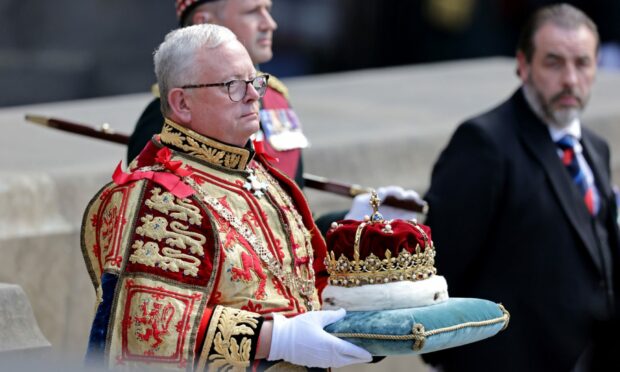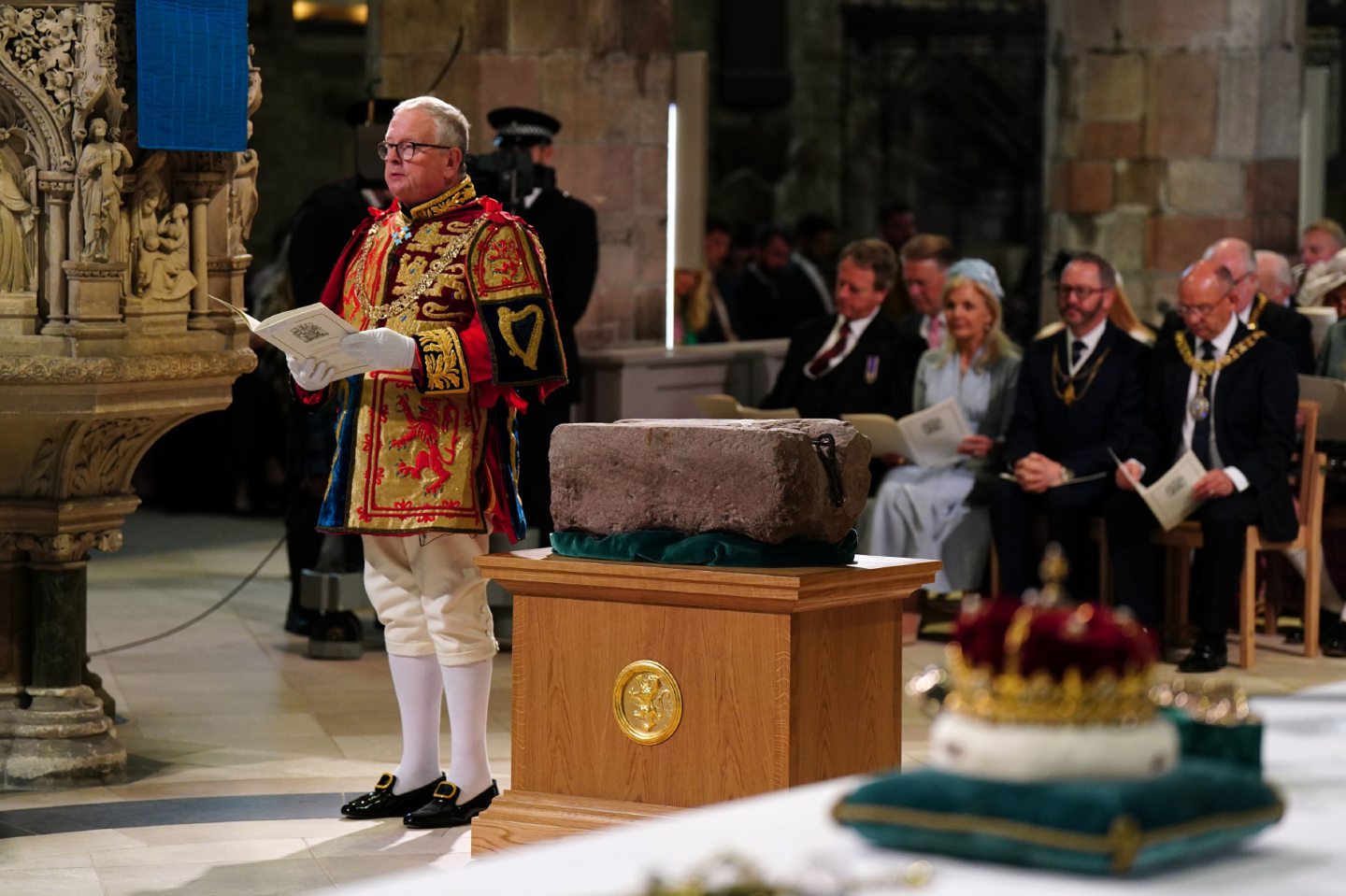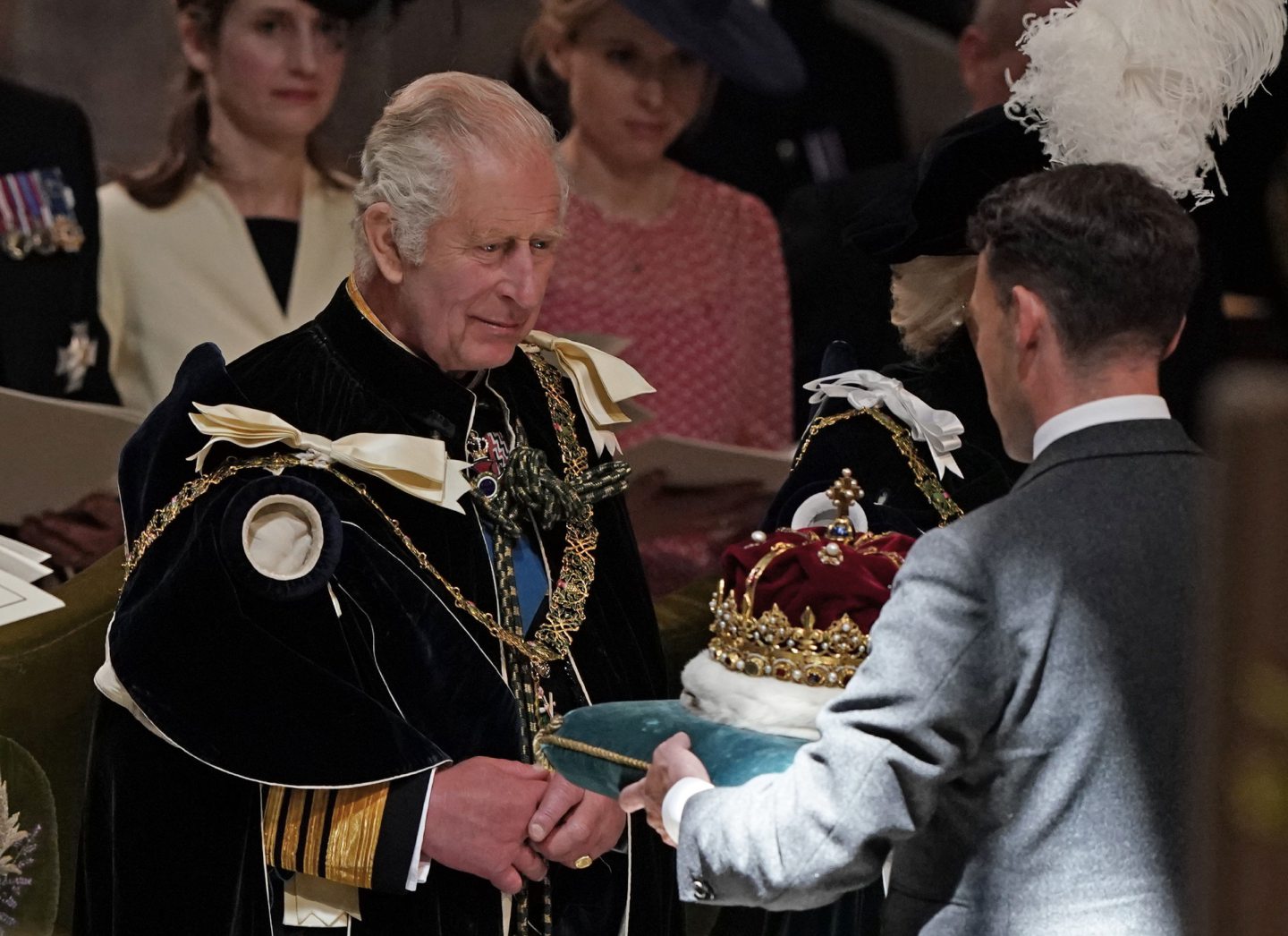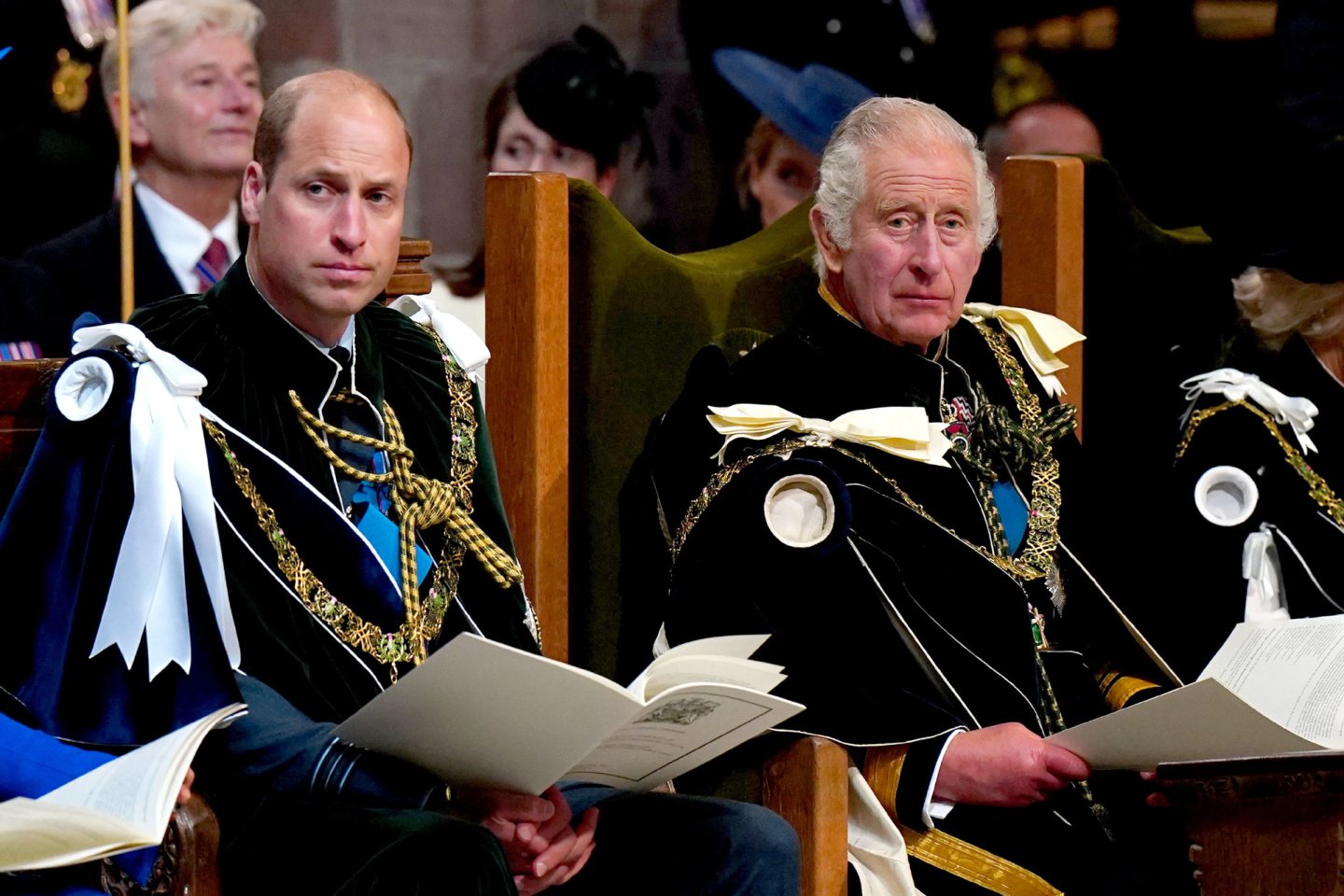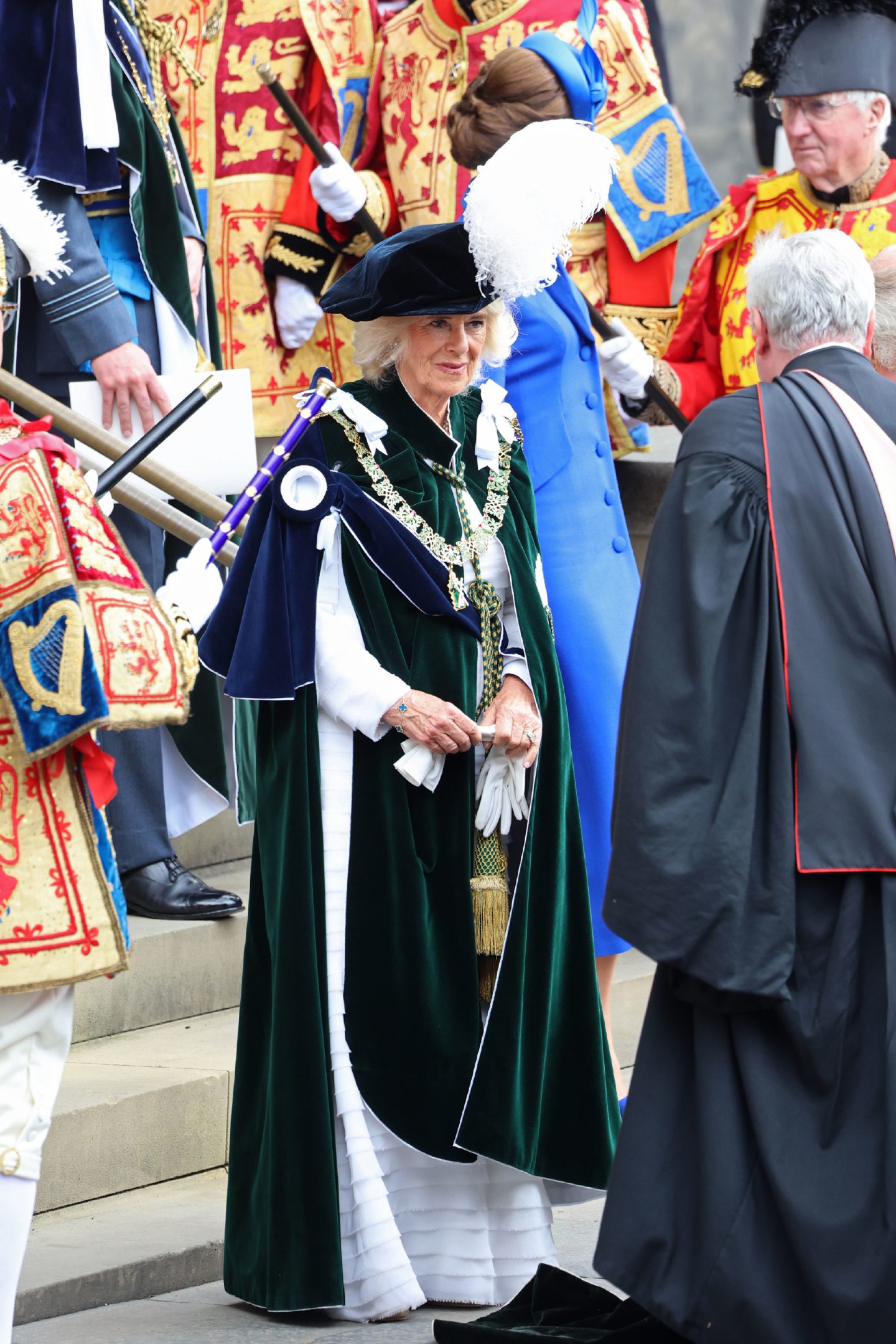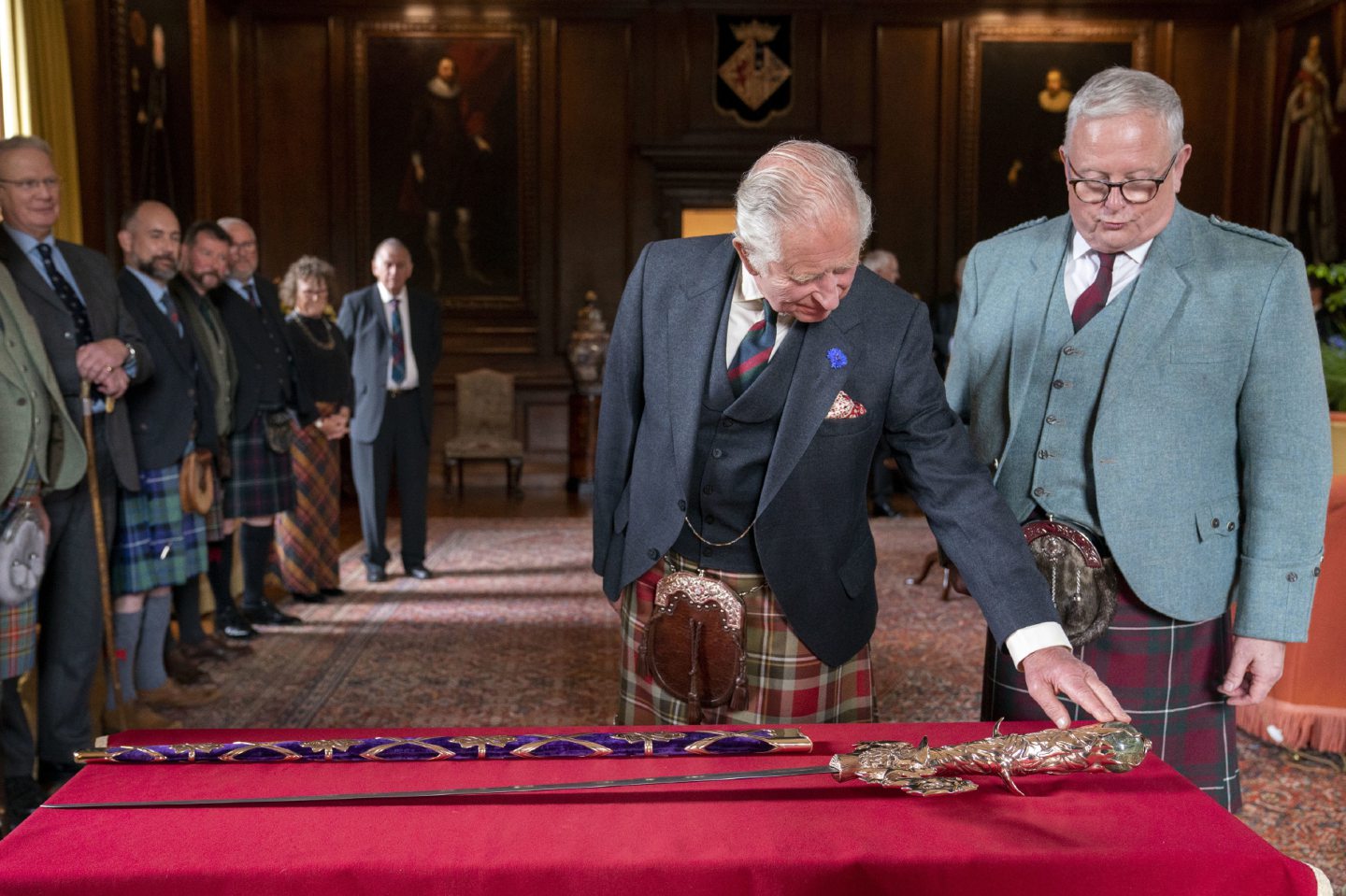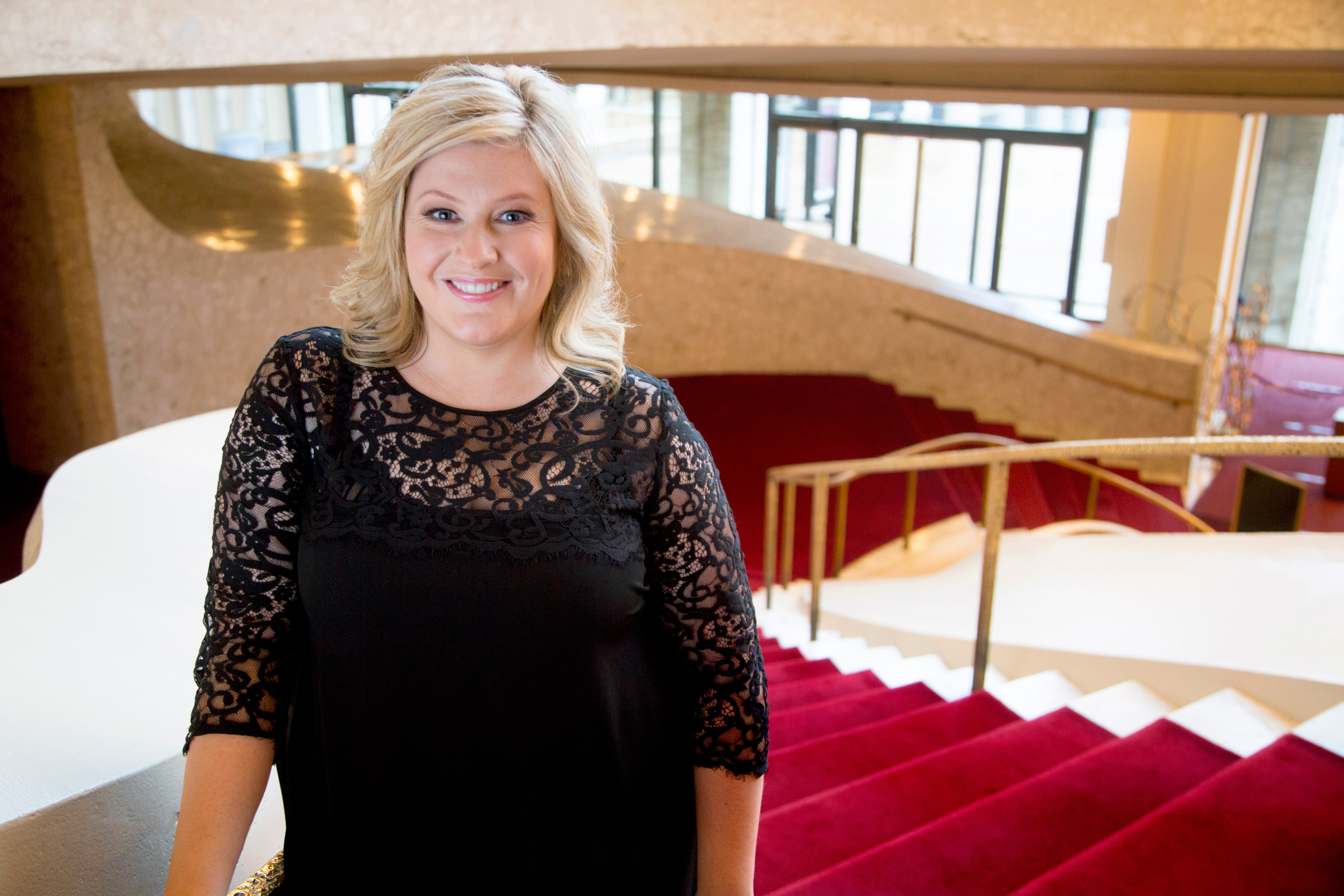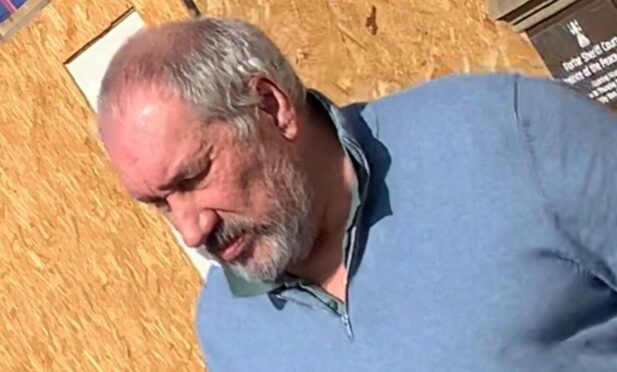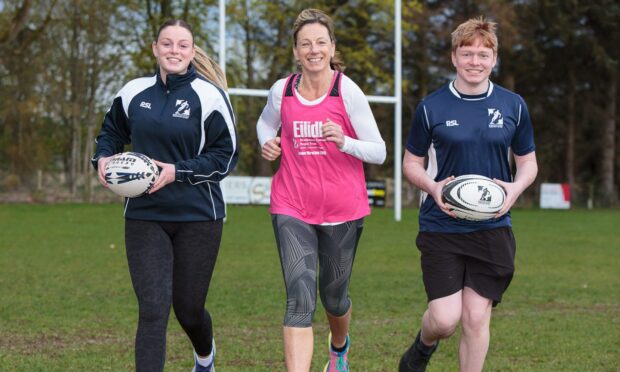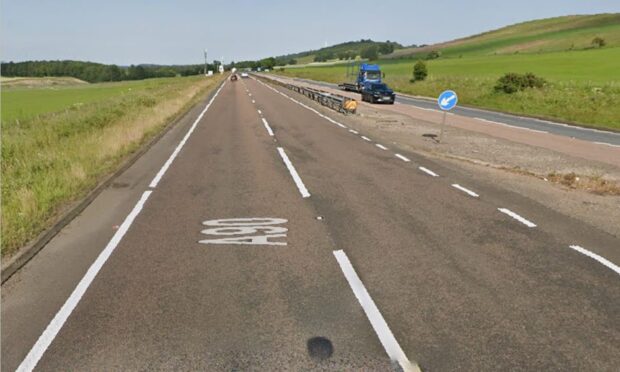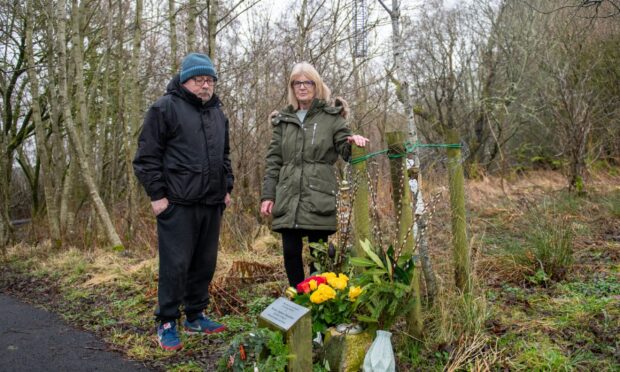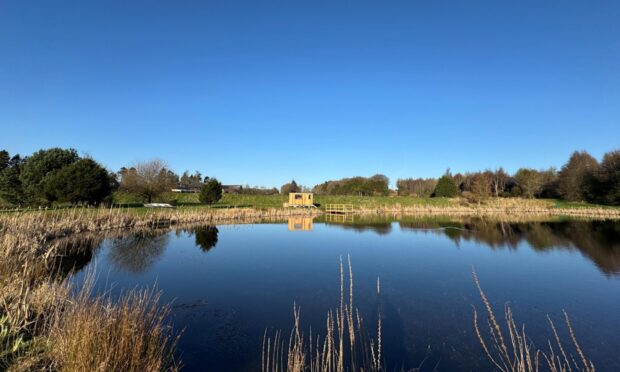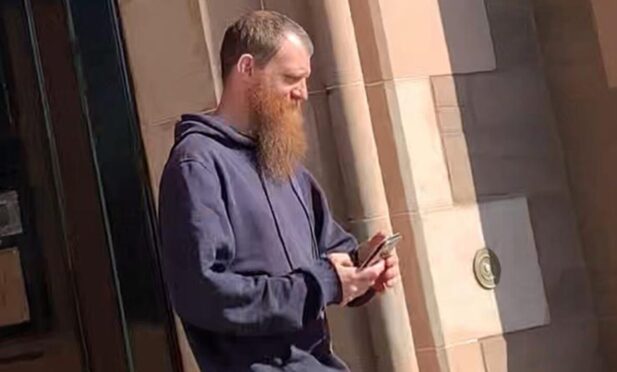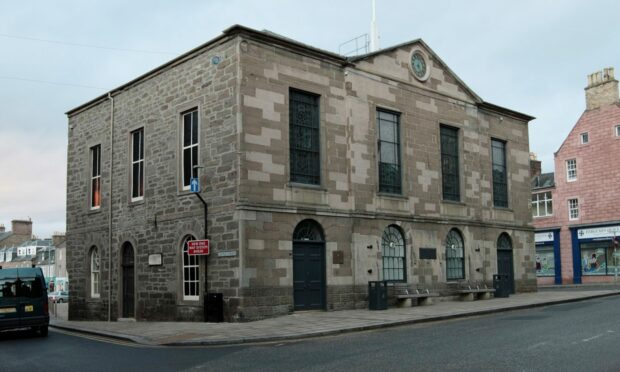Scotland’s most ancient symbols of identity were united for the first time as King Charles III accepted the Honours of Scotland.
It was the first time the Stone of Scone and the Scottish regalia had been present at the same time in St Giles Cathedral.
The Stone of Destiny, soon to be taken to its new home in Perth has only had two homes since its removal from Scone by Edward I of England in 1296.
Down the ages it has been a symbol of Scottish sovereignty as Lord Lyon, Joseph Morrow of Dundee, told the congregation at the national service of thanksgiving and dedication.
The stark simplicity of the stone provided a contrast with the splendour of the Honours of Scotland presented to King Charles III.
These are dazzling artefacts gifted to Scotland by Popes but playing a central role in St Giles, a cradle of the Reformation, which gave a pulpit to John Knox.
These different strands of tradition helped craft the modern country Scotland is today, yet the rhythm of history still pulsed through this service.
‘Not my king’ shouts on Royal Mile
The last time we have seen what has been called a Scottish coronation was when Queen Elizabeth II accepted the regalia in 1953.
Back then vast crowds lined both sides of Princes Street. Today the crowds on the Royal Mile were more compact but equally enthusiastic.
In their midst was a vocal body of republicans with flags proclaiming: “Not my king.”
Their shouts could be heard clearly in the cathedral after violinist Nicola Benedetti and the Honours of Scotland Ensemble played Farewell to Stromness.
Five compositions had been commissioned by the King, all hauntingly beautiful and distinctly Scottish.
These included Balmoral Flourishes, by Aberdeen University Professor Paul Mealor, chosen to reflect the King’s love of north-east Scotland.
Just before the King and Queen arrived, accompanied by the Duke and Duchess of Rothesay, Robert Lovie and Ryan Corbett performed Caledonia, written by Dougie MacLean of Dunkeld.
‘Relaxed affair’
As the service began, the King could not have failed to hear the republican chants from outside which broke out as Kirk moderator Sally Forter-Fulton gave her sermon.
I was here in September as the late Queen was lying in rest during a service of thanksgiving. It was, of course, sombre and it was a far more relaxed royal party and congregation.
Today was more relaxed: guests chatted and I even saw one man tuck into a snack in his seat.
Still, the service followed a similar form to the 1953 dedication.
The honour of presenting the Sword of Elizabeth to the King fell to Dame Katherine Grainger, former Olympic rower and Chancellor of Glasgow University.
Among the sword’s escorts were Marcus Humphrey of Dinnet in Deeside.
The sword is etched with figures of Saints Peter and Paul and bears the inscription of Pope Julius crafted in the indulgent style of a pre-Reformation age.
Lady Dorrian, Lord Justice Clerk bore the sceptre, presented by Pope Alexander to King James IV.
The Crown of Scotland, offered to the King, was used at the coronation of the ultimately tragic Mary. Queen of Scots in 1543.
It was presented to the King by the Duke of Hamilton and Brandon, escorted by Lochlan Sweaton, headboy at Balwearie High School, Kirkcaldy, and Ailsa Russell, headgirl of Clydeview Academy.
After accepting the crown, the King said: “In receiving this Crown, I so promise by God’s help.”
Karen’s performance
Almost exactly 70 years earlier, the late Queen accepted the Honours of Scotland and then placed them in the keeping of the current duke’s grandfather, Alexander Douglas-Hamilton, 14th Duke of Hamilton and 11th Duke of Brandon.
It was the current duke who placed the Crown of Scotland on the coffin of the late Queen as she lay in rest at St Giles in September last year.
After the King accepted the Honours of Scotland, Arbroath-born mezzo-soprano Karen Cargill performed A Song of Thanksgiving and Dedication, in a Doric tribute to the Queen as chancellor of Aberdeen University. She was accompanied by Glasgow’s The Ayoub Sisters.
The King had commissioned London-based Joanna Gill, an Aberdeen graduate to compose the piece.
Karen (47) who credits her music teacher Molly Robb and Arbroath Musical Festival with shaping her career, has performed in some of the world’s greatest venues including Carnegie Hall in New York.
Before the service, the a people’s procession made up of 100 members of organisations including Angus and Dundee Cadets; The Boys’ Brigade; the Royal and Ancient Golf Club of St Andrews, the NHS and RNLI, preceded the military procession to St Giles.
As the King and Queen returned to Holyroodhouse they were greeted by a 21-gun salute from Edinburgh Castle and an RAF flypast.
